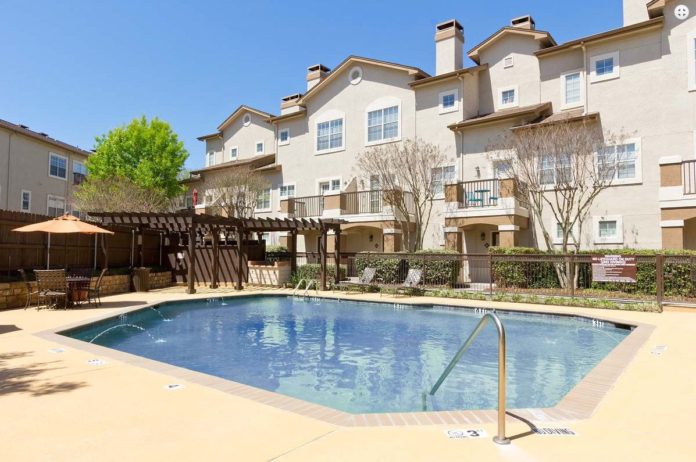The booming Dallas-Fort Worth economy is churning out thousands of new jobs, which is drawing thousands of newcomers to the area, all of them needing somewhere to live.
In addition, tens of thousands of new college graduates and other young people from the local area are also looking to strike out on their own for the first time. According to financial advice site WalletHub, Fort Worth is the sixth-fastest growing large city in America.
As a result, overwhelming demand has put pressure on single-family and multifamily housing markets and thrust DFW into the spotlight as one of the hottest housing markets in the country. Tight supply prompted bidding wars among prospective buyers, particularly for affordably-priced homes.
Young people, who couldn’t afford or weren’t ready to buy, set their sights on apartments, driving demand and triggering a construction boom.
“In 2017, more apartments were added to inventory in the Dallas-Fort Worth Metroplex than any other metro in the country,” said Drew Kile, senior director of Institutional Property Advisors Texas, a division of Marcus & Millchap, during a Fort Worth presentation earlier this year.
More than 30,000 apartments began leasing in 2017, up from about 18,000 in 2016.
The “saving grace” of apartment development boom was that it was accompanied by an increase of more than 95,000 jobs, outpacing second place New York City by about 30,000 new workers, Kile said.
As a result, occupancy remained at about 95.2 percent in Fort Worth compared to 94.4 percent in Dallas.
So far this year, upwards of 14,300 apartments have already come online though the second quarter of this year, according to a second quarter report from CBRE, a commercial real estate services and investment firm. About 8,800 units were added in the second quarter alone.
“Dallas-Fort Worth apartment demand leads by a staggering margin, exceeding 27,000 units forecasted for this year,” according to the CBRE report.
The DFW area already has nearly 500,000 apartment units, with about 360,000 in the Dallas area and nearly 140,000 on the Fort Worth side.
Industry experts say due to such economic indicators as slightly higher employment growth and better affordability in single-housing, the Fort Worth area has gained some advantages over the Dallas area.
“The Fort Worth side of the metro area continues to outperform the eastern side in both occupancy and rent growth,” Kile said.
Rents in the Fort Worth area have increased 3.1 percent in the past year compared to 1.3 percent in the Dallas area. Projected rent growth is expected to average 3.7 percent per year for the next two years in the Fort Worth area compared to 1.9 percent on the Dallas side, Kile said.
The Fort Worth market, which includes Tarrant and other neighboring counties, has an inventory of about 200,000 apartment units, according to Kile.
Average rent in the Fort Worth area ranges from about $1,100 to $1,500. Rents in last year climbed as high as $7,800, in downtown, which had an inventory of 2,906 total units, including 380 new apartments that became available in 2016 and last year, according to Downtown Fort Worth Inc. data.
Most of the new apartments are high-end properties chock full of amenities.
“A lot of people, especially millennials want a lot of amenities and are willing to pay for them even if it means they have to have a roommate to share the cost,” said Andy Taft, president of Downtown Fort Worth Inc.
Nearly 7,800 people lived downtown in 2017, according to the Downtown Fort Worth Inc.’s latest annual report. The number of downtown residents has grown at a rate of 6.3 percent since 2007.
With the addition of more apartments, the downtown population has become “more diverse, wealthier and better educated,” according to the report.
Last year, millennials, defined as people born between 1981 and 1996, accounted for 33.6 percent of all downtown residents, with 52.3 percent of them living in downtown apartments.
Although downtown Fort Worth has a high concentration of restaurants, bars and shops, this is not where a majority of millennials live, according to research by the apartment search website RENTcafe.com.
Because millennials make up a vast part of the population, they drive apartment demand, according to the report.
Based on U.S. Census Data, nearly 260,000 millennials live in the Fort Worth area, accounting for 30 percent of the population, according to RENTCafe.com research, which examined the millennial populations by ZIP codes across the United States.
In Texas, only one Fort Worth ZIP code made the Top 10 list of trending millennial hot spots. That ZIP code is 76177, and was No. 7 on the list, with a 25.9 percent increase in millennial population over the past five years. This ZIP code includes the North Fort Worth/Alliance Corridor.
But it is ZIP code 76155 in the Arlington area that has the largest share of millennials. 55 percent, of all the ZIP codes in entire Fort Worth area.
Other fast-growing m millennial hot spots are Historic South, where ZIP code 76104 has experience 20 percent growth in the past five years and is home to about 5,300 millennials.
With 10,200 millennial residents, ZIP code 76107 has seen an increase of 23 percent in the millennial population and has become “a clear millennial hot spot,” according to RENTCafe.com researchers.
RENTCafe also reports that millennials seek out neighborhoods that are walkable, offer abundant dining, entertainment, nightlife and parks.
“They also tend to like alternative types of transportation – trains, bikes, shared rides – and proximity to jobs is an important factor to them,” said RENTCafe.com researcher Nadia Balint.
Millennials prefer affordability but are willing to sacrifice it for locations with that cater to their needs.
“Many of the neighborhoods that have seen the highest growth across the country in the last few years used to be cheaper neighborhoods that have since gained in popularity and have become more expensive” such as Historic Southside, Balint said.






